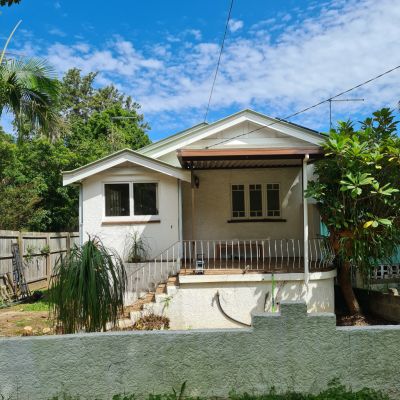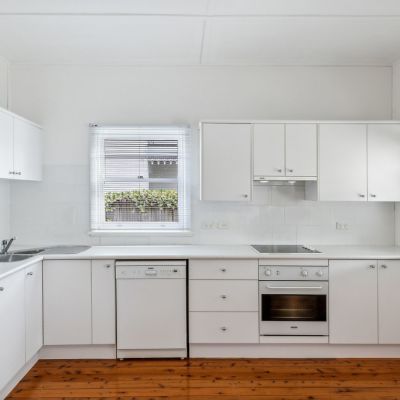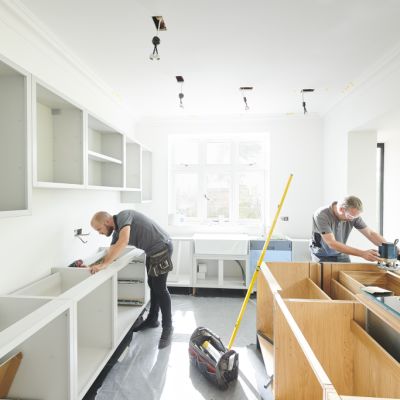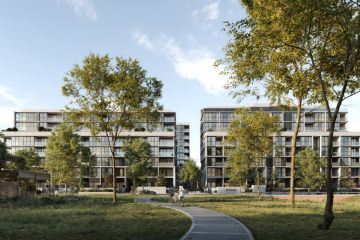Australians used to a love a "renovator's delight". But is the reno boom going bust?
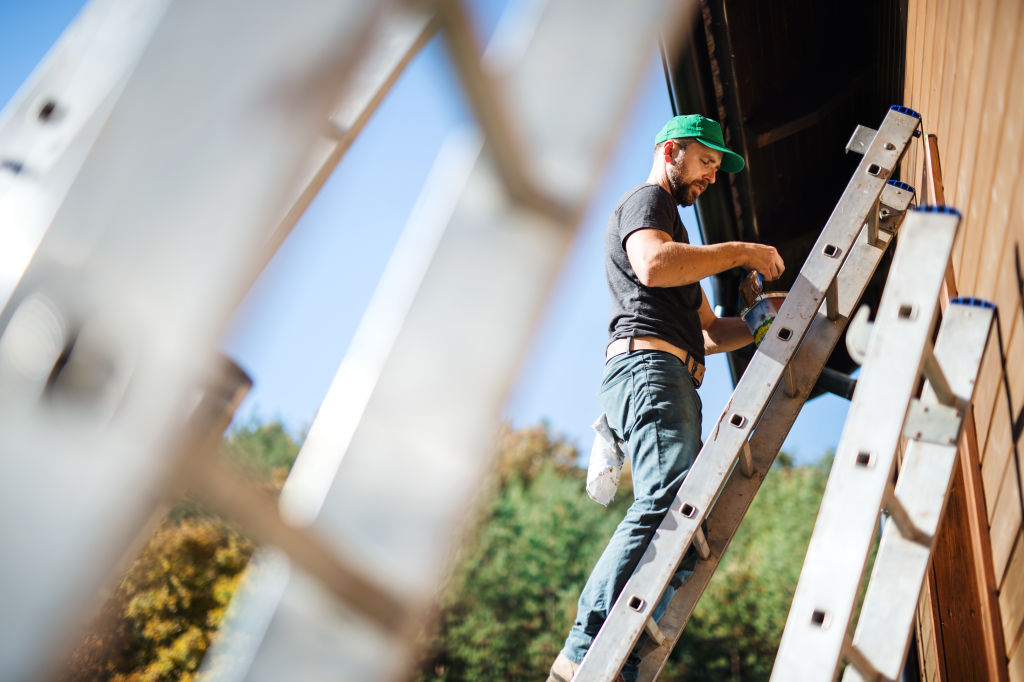
For many Australians, buying a home to revamp to your personal taste is a long-held domestic dream.
At the renovation peak of 2021 and 2022, Australians splashed $59.8 billion on updating their homes, according to the Housing Industry Association.
However, a litany of impediments has stalled the flurry of renovations that took flight during the early era of COVID. Back then, interest rates were low and time was abundant. Now that our hours are precious and our wallets thin, the bottom is falling out of the sector.
Building approvals in Victoria last year were 24.5 per cent lower than the historic high in 2021, dropping from 70,590 approvals to 53,272.
Cash rate rises, delayed schedules and fewer available tradies have quelled activity.
So have increased material costs: Australian Bureau of Statistics figures show that concrete, cement and sand, as well as timber joinery and ceramic products, are more expensive than 12 months ago.
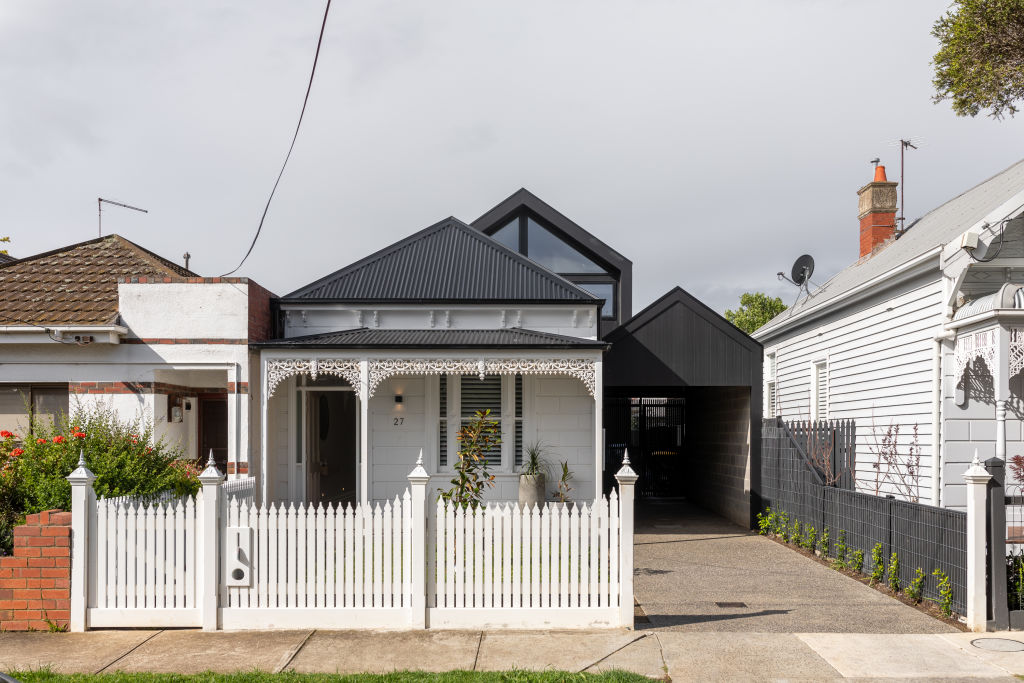
As a result, most homeowners are now not renovating unless it is essential, says Mark Browning, NAB’s head of valuations and property advisory.
“Compared to the peak of renovation activity, which was happening during the earlier parts of COVID and before interest rates were on the rise, activity is more muted across the sector at the moment,” he says.
“There are challenges to get access to trades and cost escalations that, depending on your reference source of choice, are 30 per cent or 40 per cent higher than they were pre-COVID. The time it takes to complete a renovation is a lot longer than it was historically.”
Some home owners’ renovations are personal, but others buy a run-down property intending to flip it. However, while updating kitchens and bathrooms once increased a home’s overall value, Browning says returns on investment are no longer guaranteed.
“In some cases, nowadays we are not even seeing those core areas result in a renovation cost equalling the uplift in value, given what is available alternatively in the market,” he says.
There has been a 15 per cent boost in listings in Victoria over five years, which has provided more options for buyers considering whether to buy a fixer-upper or a turn-key. For those less eager or able to endure the potential budget blow-out, ready-made properties have become highly sought after by today’s buyers.
If you’re going to renovate, do it slowly
However, debutant homeowners remain the prime audience for houses that need a little love.
First-home buyer Jack and his partner Amy bought last year in Melbourne’s eastern suburbs and elected for a house they could improve over time.
They embarked on gentle changes, including a fresh coat of paint and upgrading cupboard handles, taps, toilets and showerheads.
“Chipping away at things slower is definitely our speed,” he says. “We did not buy at our limit so we could have money sitting in our offset account, just in case.”
Jack says doing less has also helped them plan for the future.
“Living in the house for nine months, at this stage, has enabled us to see it throughout the year – how the lighting is, and how hot or cold it gets. If we jumped into renovations, I think we would have missed aspects we could have otherwise factored in.”
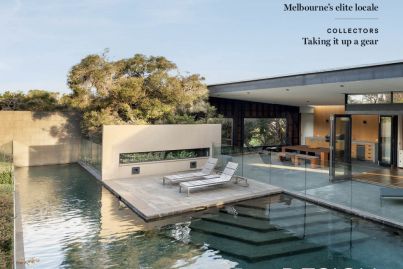

The couple sourced help from Prop Culture buyer and seller advocates Sam Davenport and Tabitha Robb.
Davenport says luxury-level buyers are less likely to tackle a reno in the current climate. But when affordable tradies are hard to come by, their younger clients will strap on a toolbelt – to some extent, at least.
“What we have noticed in the past 12 months, in the $2 million to $6 million bracket, buyers are ideally looking at a finished product that they can move into, unpack and enjoy,” she says.
“And the younger buyers looking at their first home are absolutely willing and open to doing a renovation but on a small scale: updates that are cosmetic, such as cabinetry, benchtops and door handles. But anything structural is getting people quite concerned.”

The data agrees. HIA’s Simon Croft, chief executive of industry and policy, says Victorians who renovate spend less on their updates than they once did.
“Victorian borrowers were less ambitious [last year], with the average owner occupier borrowing $182,600 to finance renovations in 2024, [which is more than] $20,000 less compared to 2023,” Croft says.
But for some, it is still a better financial option than building from scratch.
“In economics, the ‘substitution effect’ comes about when consumers shift to a cheaper alternative in lieu of another good, service or commodity,” Croft says.
“With the cost of land, both greenfield and infill, continuing to increase and demand for housing remaining robust, there continues to be a substitution effect from new home building to renovating existing homes.”
We recommend
We thought you might like
States
Capital Cities
Capital Cities - Rentals
Popular Areas
Allhomes
More
